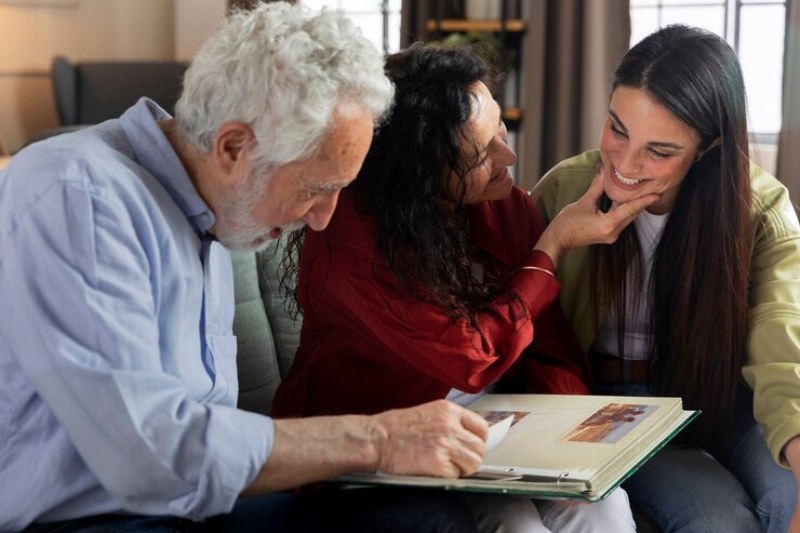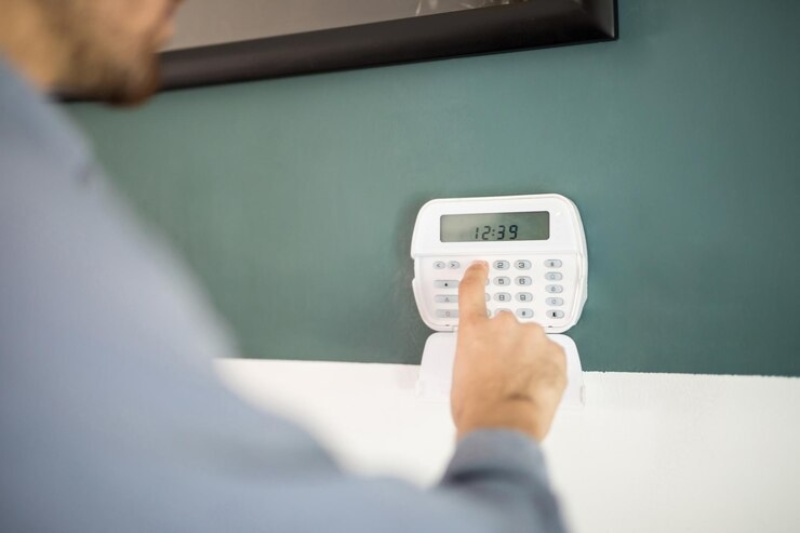Lifestyle
What to Expect During Your Elopement Photography Session?

Elopement photography is about capturing the intimate and personal moments of your special day, which is often a more relaxed and informal setting compared to a traditional wedding. Whether heading to a mountaintop, a secluded beach, or a quiet forest, knowing what to expect during your elopement photography session can make the experience smooth and enjoyable. We will explore the key aspects of your session with this elopement photographer from Las Vegas, including preparation, the flow of the day, and how your photographer captures candid and emotional moments in this unique setting.
Preparation Before the Shoot
Preparation is key to ensuring that your elopement photography session goes smoothly. This starts well before the day of your elopement, as it involves discussing your vision and preferences with your photographer. Typically, your photographer will want to know the details of the location, time, and the overall atmosphere you’re hoping to create. This is a good opportunity to discuss specific shots you want to be captured, such as exchanging vows, the first look, or intimate candid moments. The setting of your elopement will play a significant role in the style of the photos, so sharing details like whether you’ll be eloping in a city, at a national park, or in the remote countryside will help the photographer prepare for any logistical challenges.
Communication about attire, potential weather conditions, and even props or personal elements you want to include is also essential. For instance, if you’re incorporating something meaningful into your ceremony, such as heirlooms or handwritten vows, your photographer can capture these meaningful details. Many photographers will also provide tips for comfort, such as suggesting layers for colder climates or helping you plan for comfortable walking shoes if you’re hiking to your destination. Ultimately, the goal is to ensure that everything is ready for a seamless and stress-free photography experience.
The Flow of the Elopement Day
Your elopement photography session will typically follow the flow of the day but with a laid-back approach to timing and structure. Elopements are often more flexible, giving you and your photographer the freedom to follow the natural rhythm of your ceremony. For instance, if you’re exchanging vows on a cliffside at sunrise or sharing a quiet picnic after your ceremony, your photographer will capture these moments as they unfold. The casual nature of elopements allows for more candid, spontaneous shots, which can often feel more genuine and emotional compared to posed photos.
A typical elopement photography session may begin with getting-ready shots. These capture the anticipation and excitement of the moments leading up to the ceremony. Your photographer may take some time to capture the small details, such as your wedding attire, rings, or any personal elements you’ve incorporated. The next major phase is the ceremony, where your photographer will discreetly document the exchange of vows, reactions, and the setting’s atmosphere. After the ceremony, time is usually dedicated to capturing couples’ portraits. These are often taken at scenic spots or locations meaningful to you both, offering a chance to slow down and reflect on the day.
The final phase often includes post-ceremony moments, such as celebratory toasts or first dances, depending on the flow of your elopement. Your photographer will also take the opportunity to document these intimate moments. Since many elopements occur in picturesque outdoor locations, expect your photographer to guide you in taking advantage of the natural light and landscape. This might involve moving to different locations nearby or taking a short walk to a scenic lookout. The day will feel less about rigid timelines and more about capturing the real moments that matter to you as a couple.
Capturing Candid and Emotional Moments
One key element of elopement photography is the ability to capture raw, emotional, and candid moments. Because elopements often have fewer distractions than larger weddings, the photographer can focus on the couple’s connection and intimate atmosphere. Your photographer will look for genuine expressions of joy, love, and excitement as they happen without interrupting or staging too much of the day. This allows for authentic and natural photos that reflect the emotional essence of your elopement.
Photographers often look for ways to blend into the background during elopements. This way, they can capture moments such as a soft glance between you and your partner, the wind in your hair, or the look of awe when you see the breathtaking scenery surrounding you. Because there’s typically more freedom to move around in an elopement setting, photographers can experiment with different angles and perspectives, creating a diverse portfolio of images that tell the full story of your day.
If your elopement involves adventure, such as hiking, kayaking, or exploring, your photographer will capture the journey’s excitement and thrill. These photos can create a dynamic and vivid narrative, combining the beauty of the landscape with the couple’s emotions. Whether it’s laughter, tears, or quiet moments of reflection, these candid shots will serve as lasting memories of your day. The relaxed atmosphere of elopement allows these moments to unfold naturally, with minimal interruptions from the photographer, ensuring your day remains about the two of you.
Your elopement photography session is an opportunity to create lasting memories of one of your life’s most intimate and meaningful days. From the initial preparations to the day’s unfolding and the candid moments captured along the way, elopement photography focuses on documenting the genuine emotions, connections, and surroundings that make your elopement unique. Expect a beautiful mix of candid shots, scenic portraits, and unforgettable moments that reflect the true essence of your elopement.
Lifestyle
Albs and Surplices: Essential Liturgical Vestments – A Complete Guide

Are you wondering what the difference is between an alb and a surplice? What is their significance in the liturgy? Did you know that the proper selection of liturgical vestments emphasizes the character of a particular season in the liturgical year? In this complete guide, you will find answers to these and many other questions regarding albs and surplices – two essential liturgical vestments. Discover their rich history, symbolism, and learn how to wear them correctly to worthily perform liturgical ministry. Enjoy reading!
Alb: A Garment of Purity and New Life in Christ
- History and Origin of the Alb
The alb, derived from the Latin word “albus” meaning “white,” has its roots in the ancient Roman tunic. In the early centuries of Christianity, it was a common garment worn by neophytes, or newly baptized individuals. The white color symbolized purity, new life in Christ, and freedom from sin. Over time, the alb became the basic liturgical vestment for clerics of various ranks, from deacons to priests and bishops.
- Symbolism of the Alb: Purity, Innocence, and Resurrection
The white color of the alb is key to its symbolism. It represents:
- Purity of Heart: The alb reminds us of the need for inner purification and preparation for celebrating sacred rites.
- Innocence: It alludes to the innocence of Adam and Eve before the Fall and to the purity of Christ.
- Resurrection: It symbolizes the new life we receive through Christ’s sacrifice and resurrection.
- Baptism: It reminds us of baptism, in which we were cleansed of sin and became children of God.
- Cut and Material of the Alb: Simplicity and Functionality
The alb typically has a simple, tunic-like cut. It is long, reaching to the ankles, with wide sleeves. Formerly, albs were made of linen, symbolizing purity and humility. Currently, other materials are also used, such as cotton, viscose, and even synthetic fabrics, which are more practical to maintain. It is important that the material be light and breathable, providing comfort during the liturgy.
- How to Wear the Alb: Correct Donning and Completion with a Cincture
The alb is put on over the head. It is important to arrange it well on the shoulders and adjust the length. Usually, the alb is girded with a cincture, a cord that symbolizes purity and obedience. The cincture should be tied at the waist so that the alb is neither too loose nor too tight. The color of the cincture can be white, but also in accordance with the liturgical color of the day.
- The Alb and Different Degrees of Ecclesiastical Hierarchy
The alb is worn by clerics of various ranks, but the way it is complemented may differ:
- Deacons: Wear an alb, a stole draped over the left shoulder, and a cincture.
- Priests: Wear an alb, a stole around the neck, and a cincture.
- Bishops: Wear an alb, a stole, a pectoral cross, a ring, and a mitre (during solemn celebrations) and a cincture.
Surplice: A Garment for Altar Servers and Some Clerics
- History and Origin of the Surplice
The surplice, like the alb, originates from the Roman tunic. Initially, it was worn by canons, clerics associated with the cathedral. Over time, the surplice became a liturgical vestment primarily for altar servers, but also for some clerics, such as lectors or acolytes.
- Symbolism of the Surplice: Service, Humility, and Discretion
The surplice symbolizes:
- Service: The altar server, wearing the surplice, expresses willingness to serve God and the Church.
- Humility: The white color of the surplice reminds us of the need for humility and modesty in liturgical service.
- Discretion: The surplice emphasizes that the altar server is present in the liturgy to serve, not to draw attention to themselves.
- Cut and Material of the Surplice: Shorter and Embellished
The surplice differs from the alb primarily in length. It is shorter, usually reaching to the knees or slightly below. It is often decorated with lace, embroidery, or other decorative elements. The material of the surplice is usually white, but it can also be cream or ecru. As with the alb, various materials are used, such as cotton, linen, or synthetic fabrics.
- How to Wear the Surplice: Worn Over a Cassock or Secular Clothing
The surplice is worn over a cassock (in the case of clerical altar servers) or over secular clothing (in the case of lay altar servers). It is important that the surplice is well-fitted to the figure and does not restrict movement.
- The Surplice and Liturgical Functions of Altar Servers
The surplice is an integral part of the altar server’s attire, regardless of the function performed:
- Altar Server: Assists the priest during Mass.
- Book Server: Reads the lessons and other liturgical texts.
- Light Server: Carries candles during processions.
- Incense Server: Incenses the altar and the faithful with incense.
Selecting and Caring for Albs and Surplices
- Choosing the Right Alb and Surplice:
When choosing an alb and a surplice, several factors should be considered:
- Material: Choose a material that is comfortable to wear, easy to maintain, and suitable for the climate.
- Cut: Adapt the cut to your figure and liturgical function.
- Size: Make sure the alb or surplice is the correct size and length.
- Embellishments: Choose embellishments that are consistent with liturgical tradition and the character of a given season of the liturgical year.
- Caring for Albs and Surplices:
To ensure that albs and surplices last for a long time, they should be properly cared for:
- Washing: Wash them regularly, according to the instructions on the label.
- Ironing: Iron them after each washing to maintain their aesthetic appearance.
- Storage: Store them in a dry and airy place, preferably on a hanger or in a special cover.
- Stain Removal: Remove stains as soon as possible, using appropriate cleaning agents.
- HAFTINAUSA: Professional Vestments and Liturgical Accessories
HAFTINAUSA, known from ornaty.pl, is a reputable manufacturer and seller of vestments and liturgical accessories. We offer a wide selection of albs and surplices made of high-quality materials, with attention to every detail. Our products are characterized by durability, aesthetics, and conformity with liturgical tradition. We provide professional advice and a personalized approach to each client.
Conclusion: The Alb and Surplice – Foundation of Liturgical Beauty
The alb and surplice, though simple in form, are incredibly rich in symbolism and meaning. They form the foundation of liturgical vestments, reminding us of purity, service, and the dignity of celebrating sacred rites. By choosing and wearing them with respect and awareness, we contribute to the beauty and depth of the Church’s liturgy. HAFTINAUSA, through its high-quality products, aims to support the dignified and solemn celebration of the liturgy by providing liturgical vestments that give honor to God and serve the faithful.
Alb: A Garment of Purity and New Life in Christ
- History and Origin of the Alb
The alb, derived from the Latin word “albus” meaning “white,” has its roots in the ancient Roman tunic. In the early centuries of Christianity, it was a common garment worn by neophytes, or newly baptized individuals. The white color symbolized purity, new life in Christ, and freedom from sin. Over time, the alb became the basic liturgical vestment for clerics of various ranks, from deacons to priests and bishops.
- Symbolism of the Alb: Purity, Innocence, and Resurrection
The white color of the alb is key to its symbolism. It represents:
- Purity of Heart: The alb reminds us of the need for inner purification and preparation for celebrating sacred rites.
- Innocence: It alludes to the innocence of Adam and Eve before the Fall and to the purity of Christ.
- Resurrection: It symbolizes the new life we receive through Christ’s sacrifice and resurrection.
- Baptism: It reminds us of baptism, in which we were cleansed of sin and became children of God.
- Cut and Material of the Alb: Simplicity and Functionality
The alb typically has a simple, tunic-like cut. It is long, reaching to the ankles, with wide sleeves. Formerly, albs were made of linen, symbolizing purity and humility. Currently, other materials are also used, such as cotton, viscose, and even synthetic fabrics, which are more practical to maintain. It is important that the material be light and breathable, providing comfort during the liturgy.
- How to Wear the Alb: Correct Donning and Completion with a Cincture
The alb is put on over the head. It is important to arrange it well on the shoulders and adjust the length. Usually, the alb is girded with a cincture, a cord that symbolizes purity and obedience. The cincture should be tied at the waist so that the alb is neither too loose nor too tight. The color of the cincture can be white, but also in accordance with the liturgical color of the day.
- The Alb and Different Degrees of Ecclesiastical Hierarchy
The alb is worn by clerics of various ranks, but the way it is complemented may differ:
- Deacons: Wear an alb, a stole draped over the left shoulder, and a cincture.
- Priests: Wear an alb, a stole around the neck, and a cincture.
- Bishops: Wear an alb, a stole, a pectoral cross, a ring, and a mitre (during solemn celebrations) and a cincture.
Surplice: A Garment for Altar Servers and Some Clerics
- History and Origin of the Surplice
The surplice, like the alb, originates from the Roman tunic. Initially, it was worn by canons, clerics associated with the cathedral. Over time, the surplice became a liturgical vestment primarily for altar servers, but also for some clerics, such as lectors or acolytes.
- Symbolism of the Surplice: Service, Humility, and Discretion
The surplice symbolizes:
- Service: The altar server, wearing the surplice, expresses willingness to serve God and the Church.
- Humility: The white color of the surplice reminds us of the need for humility and modesty in liturgical service.
- Discretion: The surplice emphasizes that the altar server is present in the liturgy to serve, not to draw attention to themselves.
- Cut and Material of the Surplice: Shorter and Embellished
The surplice differs from the alb primarily in length. It is shorter, usually reaching to the knees or slightly below. It is often decorated with lace, embroidery, or other decorative elements. The material of the surplice is usually white, but it can also be cream or ecru. As with the alb, various materials are used, such as cotton, linen, or synthetic fabrics.
- How to Wear the Surplice: Worn Over a Cassock or Secular Clothing
The surplice is worn over a cassock (in the case of clerical altar servers) or over secular clothing (in the case of lay altar servers). It is important that the surplice is well-fitted to the figure and does not restrict movement.
- The Surplice and Liturgical Functions of Altar Servers
The surplice is an integral part of the altar server’s attire, regardless of the function performed:
- Altar Server: Assists the priest during Mass.
- Book Server: Reads the lessons and other liturgical texts.
- Light Server: Carries candles during processions.
- Incense Server: Incenses the altar and the faithful with incense.
Selecting and Caring for Albs and Surplices
- Choosing the Right Alb and Surplice:
When choosing an alb and a surplice, several factors should be considered:
- Material: Choose a material that is comfortable to wear, easy to maintain, and suitable for the climate.
- Cut: Adapt the cut to your figure and liturgical function.
- Size: Make sure the alb or surplice is the correct size and length.
- Embellishments: Choose embellishments that are consistent with liturgical tradition and the character of a given season of the liturgical year.
- Caring for Albs and Surplices:
To ensure that albs and surplices last for a long time, they should be properly cared for:
- Washing: Wash them regularly, according to the instructions on the label.
- Ironing: Iron them after each washing to maintain their aesthetic appearance.
- Storage: Store them in a dry and airy place, preferably on a hanger or in a special cover.
- Stain Removal: Remove stains as soon as possible, using appropriate cleaning agents.
- HAFTINAUSA: Professional Vestments and Liturgical Accessories
HAFTINAUSA, known from ornaty.pl, is a reputable manufacturer and seller of vestments and liturgical accessories. We offer a wide selection of albs and surplices made of high-quality materials, with attention to every detail. Our products are characterized by durability, aesthetics, and conformity with liturgical tradition. We provide professional advice and a personalized approach to each client.
Conclusion: The Alb and Surplice – Foundation of Liturgical Beauty
The alb and surplice, though simple in form, are incredibly rich in symbolism and meaning. They form the foundation of liturgical vestments, reminding us of purity, service, and the dignity of celebrating sacred rites. By choosing and wearing them with respect and awareness, we contribute to the beauty and depth of the Church’s liturgy. HAFTINAUSA, through its high-quality products, aims to support the dignified and solemn celebration of the liturgy by providing liturgical vestments that give honor to God and serve the faithful.
Lifestyle
The Ultimate Guide to Senior Care Solutions: 4 Things You Need to Know

As our loved ones age, it’s important to know about the senior care solutions available. The choices can be confusing, so we’re here to provide helpful insights on what every family should understand about senior care.
Our experts have created a guide to help you through the process with confidence. Whether you’re a caregiver, family member, or just curious, this post is for you.
Stay tuned for tips and information to help you make the best decision for your loved one’s care.
1. Types of Senior Care Solutions
These solutions include in-home care, assisted living facilities, nursing homes, and memory care communities. In-home care provides a range of services such as the following:
- personal care
- help with daily tasks
- and companionship in the comfort of the senior’s own home
Assisted living facilities offer a more independent living environment with access to on-site care services. Nursing homes offer 24/7 medical care for seniors with chronic health conditions or disabilities.
Memory care communities specialize in providing support and care for individuals with Alzheimer’s or dementia. Each type of senior care solution offers different levels of support and is tailored to meet the unique needs of the individual.
2. Important Services Offered
When assessing retirement living options, it’s vital to look at the services offered. Different facilities and care providers may vary widely in their offerings. Common services include:
- Personal care assistance with bathing, dressing, and grooming.
- Medication management to ensure timely ingestion of prescribed drugs.
- Meal preparation and nutritional guidance tailored to health needs.
- Transportation for medical appointments and social outings.
Such services can significantly enhance the quality of life for seniors by fostering independence while ensuring their needs are met.
3. Financial Considerations
Understanding the financial aspects of senior care solutions is equally crucial. Costs can vary dramatically based on the type of service and location. For instance, in-home care often charges on an hourly basis, while assisted living facilities may require monthly fees.
The national average for in-home care is approximately $27 per hour, while assisted living can average around $4,300 per month. Financial planning should also consider long-term care insurance, veteran benefits, and possible government assistance programs.
It’s essential to strategize ahead of time, as this financial burden can affect not only the senior’s care but also family budgets. Consulting with a financial advisor specialized in elder care can provide valuable insights.
4. Choosing the Right Provider
Selecting a senior care provider requires careful consideration. Families should assess providers based on qualifications, staff-to-patient ratios, and facility accreditation. Visiting potential care locations in person can make a difference-evaluating cleanliness, atmosphere, and the friendliness of the staff is vital.
It’s also significant to inquire about personalized care plans tailored to individual needs. For those exploring options, it’s worth looking into this leading senior option in Ocean Grove for high-quality services. Finally, family involvement and regular communication with caregivers will ensure that seniors receive the best possible care.
Explore Senior Care Solutions With Our Ultimate Guide
It is important to understand the different senior care solutions available to ensure your loved ones receive the best possible care. From elderly home care to assisted living facilities, each option has its own unique benefits and considerations. Take the time to research and discuss with your family to determine the best solution for your needs.
Don’t hesitate to explore the resources and support available to help you along the way. Start planning for your loved ones’ senior care needs today.
Looking for more tips and advice? You’re in the right place! Make sure to bookmark our page and come back to check out more articles.
Lifestyle
The Importance of Fireproof Safes for Home and Office Security

Fireproof safes are essential for safeguarding valuable possessions, sensitive documents, and irreplaceable items against the unpredictable. They offer peace of mind by protecting against fire, theft, or water damage. Both homes and offices contain monetary and emotional value items that could be lost forever without proper protection. We will explore the significance of fireproof safes for sale in enhancing security, protecting assets, and offering long-term convenience. With the right safe, you shield physical items and ensure your personal and professional life remains intact even after emergencies.
Protecting Assets from Fire Damage
Fire damage is among the most devastating risks to homes and offices, often destroying belongings. Legal documents such as property deeds, birth certificates, and insurance policies can be irreparably lost in a fire. In a business setting, contracts, client records, and financial documents are equally irreplaceable and critical. Fireproof safes act as a barrier against these losses.
The materials used to construct fireproof safes are designed to withstand extreme temperatures for extended periods. This durability ensures that the contents remain protected even during prolonged exposure to fire. In addition, fireproof safes come in various ratings, indicating how long they can endure specific temperatures. You can ensure optimal protection by selecting a model with the appropriate rating for your needs.
Fireproof safes can safeguard sentimental items such as photo albums, heirlooms, or handwritten letters for households. In an office, the safe becomes a repository for proprietary data or contracts that could otherwise lead to financial or reputational losses if destroyed. When choosing a fireproof safe, it’s essential to assess the types of items you wish to protect and the potential risks unique to your environment. This ensures you select a safe that meets your specific needs.
Preventing Theft and Unauthorized Access
Beyond fire damage, theft is another significant concern for homeowners and business operators. While locks and security systems provide initial protection, they are sometimes foolproof. Intruders who breach these barriers often target valuables such as cash, jewelry, or sensitive documents. Fireproof safes withstand fire and are built to resist forced entry, making them an effective dual-purpose solution.
Modern safes incorporate advanced locking mechanisms like digital keypads, biometric access, or combination locks. These features make unauthorized access nearly impossible, deterring burglars from tampering with the safe. Many fireproof safes are also designed to be bolted to the floor, further increasing security by preventing physical removal.
In offices, fireproof safes can protect sensitive employee or client data, which may otherwise be exploited in the wrong hands. By securely storing financial records, contracts, or intellectual property, businesses can mitigate data breaches or theft risks. For homeowners, the safe becomes a secure location for storing items such as passports, social security cards, or spare keys, ensuring they are not easily accessible to intruders.
The presence of a fireproof safe also serves as a psychological deterrent. Burglars often seek quick and easy targets, and the added challenge of breaking into a safe may discourage them from continuing their efforts. Thus, fireproof safes protect your assets and enhance the overall security of your home or office.
Ensuring Water Resistance and Longevity
Many people overlook the fact that fireproof safes also offer water resistance. This feature is crucial, as fires are typically extinguished with water or sprinklers, which can further damage belongings. By incorporating water resistance, fireproof safes provide comprehensive protection against multiple disasters.
For homeowners, water resistance ensures that documents, cash, and electronics remain intact even if the safe is submerged or exposed to high moisture levels. This feature safeguards expensive equipment or irreplaceable data stored on office hard drives. Water resistance extends the safe’s usability and reliability, making it a valuable home and office security investment.
Another key advantage of fireproof safes is their durability. Built to last, they offer long-term protection for their contents, ensuring you don’t frequently have to worry about replacement or repairs. Their robust construction makes them resistant to wear and tear, maintaining their integrity even after years of use. Whether you are protecting irreplaceable family heirlooms or crucial business documents, the durability of a fireproof safe ensures lasting security.
Moreover, modern safes are designed with user convenience in mind. They come in various sizes and designs, allowing users to choose models that fit seamlessly into their homes or offices. Compact safes can be tucked into inconspicuous corners, while larger models accommodate bulkier items. This flexibility ensures that fireproof safes cater to a wide range of needs without compromising functionality.
Fireproof safes are indispensable for enhancing security and protecting valuable assets in homes and offices. They guard against fire damage, theft, and water exposure, offering comprehensive protection that ensures the longevity and safety of your possessions. By investing in a fireproof safe, you gain a secure storage solution and the peace of mind that comes with being prepared for emergencies.
We have explored the various advantages of fireproof safes, highlighting their role in preventing loss, ensuring convenience, and promoting overall security. Whether safeguarding family heirlooms or crucial business data, a fireproof safe is a practical investment that offers long-term benefits. You can confidently protect what matters most by incorporating one into your home or office.
-

 Entertainment11 months ago
Entertainment11 months agoBest Kickass Proxy List 2024 – 100% Working to Unblock to Access
-

 Lifestyle11 months ago
Lifestyle11 months agoBanging The Underdog Incident 2022
-

 Entertainment11 months ago
Entertainment11 months agoTamilMV Proxy Sites List 2025 – How to Unblock TamilMV Safely?
-

 Entertainment11 months ago
Entertainment11 months agoTamilRockers Proxy 2025: 20+ Working Links, Mirror Sites & VPN Guide
-

 Fashion9 months ago
Fashion9 months agoTrendy Midi Dresses for Casual Wear: Hair Care Tips Included!
-

 Entertainment11 months ago
Entertainment11 months agoPirate Bay Proxy List 2025: Access The Pirate Bay Safely
-

 Technology8 months ago
Technology8 months agoSSIS 469 – Detailed Guide to Understand The Features and Benefits
-

 Blog9 months ago
Blog9 months agoCy Kass – Family Detail of Alex Wagner and Sam Kass




